Deals: iPad Air prices are falling, multiple Snapdragon X laptops go on pre-order

Apple recently refreshed its premium iPad lineup with new chipsets. The Pro models are fairly pricey and have more processing power than some laptops, so the Air series is better suited for many users.
The old Apple iPad Air (2022) model is still around, going for $550 for a 256GB Wi-Fi model. Earlier this month, the price was $600. Not a bad discount, but now the 2024 series is here. Is it the better option?
The iPad Air 11 (2024) brings the newer M2 chipset, which puts it on par with the older iPad Pros from 2022. However, it still uses an IPS LCD running at just 60Hz, meaning that the chipset is the only real upgrade since 2022. And while the prices look similar, note the storage – the 2024 model is $20 more for half the storage.
The more interesting model is the larger iPad Air 13 (2024). This is the first non-Pro of this size and while it’s not cheap, it is noticeably cheaper than even refurbished iPad Pro 12.9 (2022) units, which feature the same M2 chipset. The downside is that this model has a 60Hz display, which feels like a waste of a mighty GPU.
Speaking of refurbished tablets, Best Buy has an iPad 10.2 (2021), aka 9th generation, at just $200. This one too has a 60Hz IPS LCD, though that feels less bad on a $200 device. While it’s a bit old, the 2021 slate will continue receiving iPadOS updates for years to come and the A13 chipset is still comparable to a mid-range Android chipset. You will have to use Lightning cables to charge it, though.
AI is the buzzword for 2024 and all major companies are working on features and services. Microsoft launched the Copilot+ program to unite Windows 11 based devices from various brands. They have enough AI compute power to run some tasks locally (good for privacy and latency) and have a dedicated Copilot button, so the AI is just one tap away.
Right now, these devices have something else in common – the Snapdragon X chipset (either Plus or Elite). This features the first CPU cores that Qualcomm has designed in-house in years and is its best Windows-on-ARM chip yet. Another thing they have in common is that they are all on pre-order and will launch in June.
Microsoft’s own Surface Pro is a 13” tablet that comes with the Snapdragon X Plus and an LCD as base (16/256GB memory). You could opt for the pricier version with an OLED display and Snapdragon X Elite (and 512GB storage) too.
We’d like to take a moment to talk about the differences. The Snapdragon X Elite has 12-CPU cores, while the Snapdragon X Plus has 10 cores. However, both are fabbed on the same 4nm node, have the same Adreno GPU and deliver the same 45 TOPS of AI compute power.
While the Surface Pro has a keyboard accessory (sold separately!), you may prefer a true laptop. The Microsoft Surface Laptop starts with a 13.8” display (with a higher 120Hz refresh rate) and a Snapdragon X Plus chipset. This variant has the same base price as the tablet, $1,000. A Snapdragon X Elite is an optional upgrade if you need the extra performance.
If you want a larger screen, the Microsoft Surface Laptop also comes in a 15” size. This one is available only with the Snapdragon X Elite chip. Also, it has a larger battery (66Wh vs. 54Wh) and faster charging (65W vs. 39W).
The Samsung Galaxy Book4 Edge also comes in two sizes – 14” and 16” – and it uses an AMOLED display (120Hz with slightly higher 2,880 x 1,800px resolution). The 14” model has a 55.9Wh battery and weighs just 2.56lbs and is 0.43” thick. The 16” is larger but still highly portable – with its 61.8Wh battery, it weighs 3.42lbs and measures 0.48”.
The Dell XPS 13 is another OLED offering, this one with a 13.4” panel. However, it only runs at 60Hz. On the plus side, this is Dell’s thinnest and lightest laptop yet (2.62lbs, 0.58”). It uses the X Elite chipset and a 55Wh battery with 60W charging.
Dell also has a cheaper offering with the Inspiron 14 Plus, a 14” laptop (60Hz LCD, QHD resolution) and the Snapdragon X Plus chip. The battery life on this one isn’t as good as on the XPS – up to 15 hours vs. up to 27 hours.
If you want OLED, the Lenovo Yoga Slim 7x offers a lot of value for money – it has a 14.5” 3K OLED touchscreen running at 90Hz and a Snapdragon X Elite chip at the same price as the Inspiron (LCD/X Plus). It’s portable (2.82lbs, 0.51”) and durable as it meets the MIL-STD-810H standards.
The HP OmniBook X is the same price too – its 14” display may be an LCD (60Hz, lower 2,240 x 1,400px resolution), but it also has the pricier X Elite chipset and it comes with 1TB of storage, which would be a $200 upgrade with other brands. It’s on the heavier side at 2.97lbs, but it promises up to 26 hours of battery life.
We like to wrap up with something out of the box, so here we picked the PlayStation VR2 headset this week – the headset itself is not new, but a few days ago it was discovered that Sony is making a PC adapter for it. Unlike the Quest 3, the PSVR2 features OLED displays along with eye tracking (foveated rendering still isn’t widely supported, though). The Quest has points in its favor too – it is a standalone device and if you do connect it to a PC, you can do so wirelessly (the PSVR only works over a wire).
We may get a commission from qualifying sales.
Reader comments
- Anonymous
- 02 Jun 2024
- 6cA
This market will crash...
- Anonymous
- 02 Jun 2024
- PG0
60hz feel like 120hz ...zzz...zz...
- Maria
- 02 Jun 2024
- xhp
Most branded ones' prices are falling at Amazon LOL
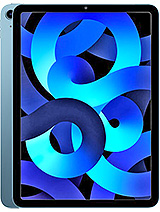
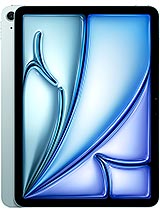
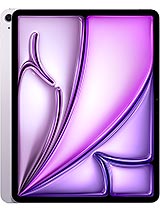
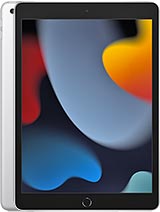













 Xiaomi
Xiaomi Samsung
Samsung Samsung
Samsung Sony
Sony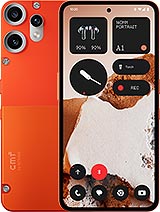 Nothing
Nothing


